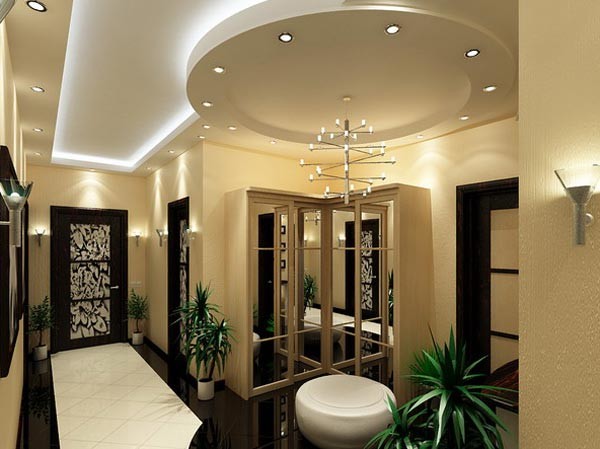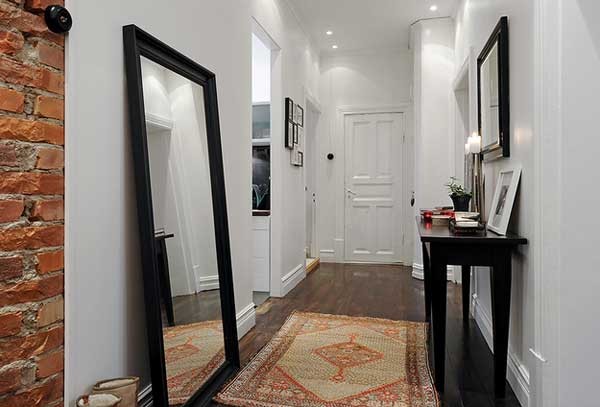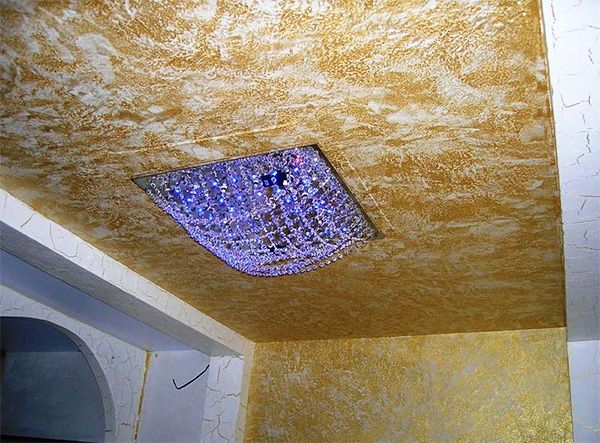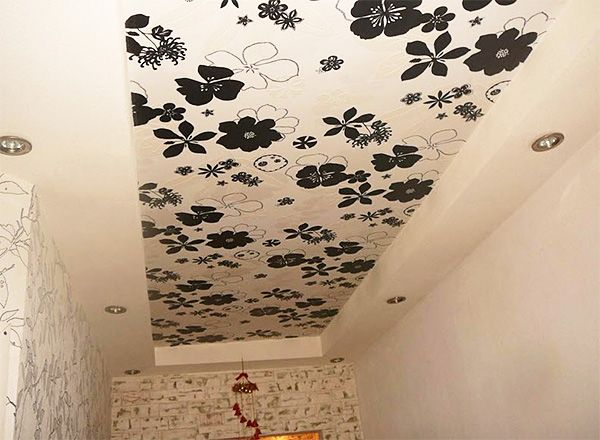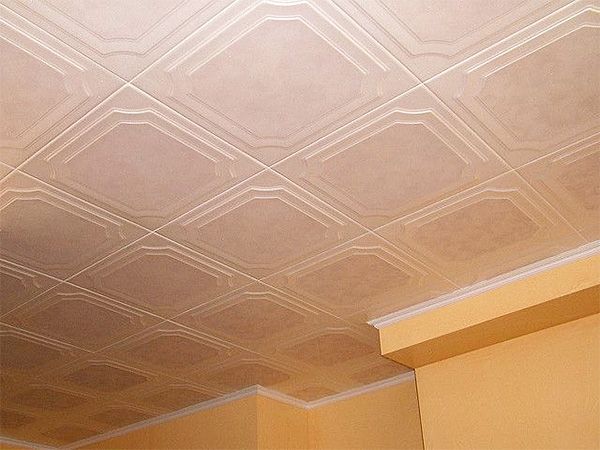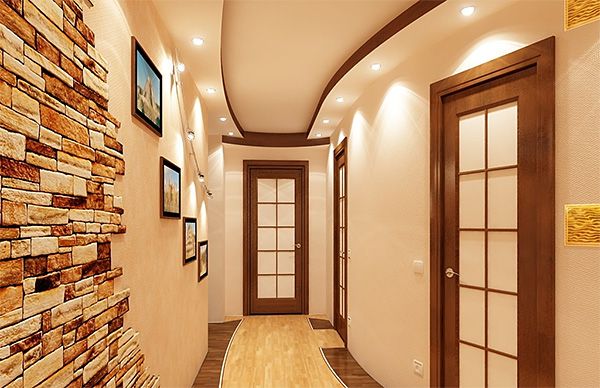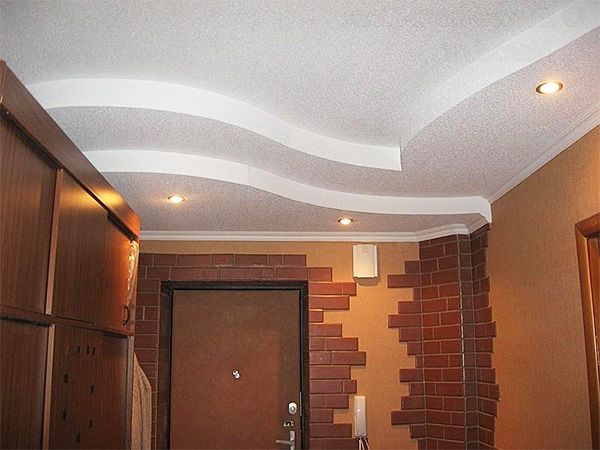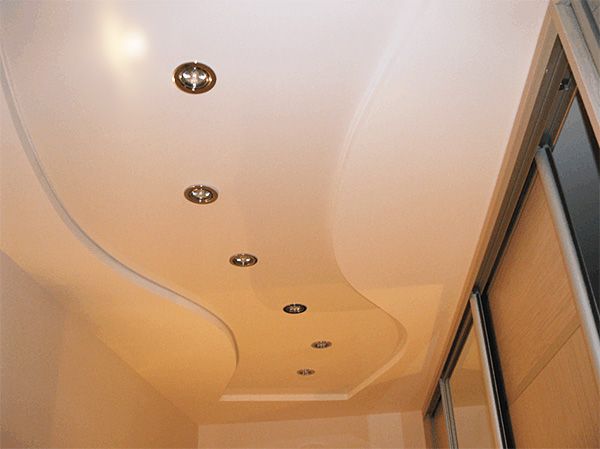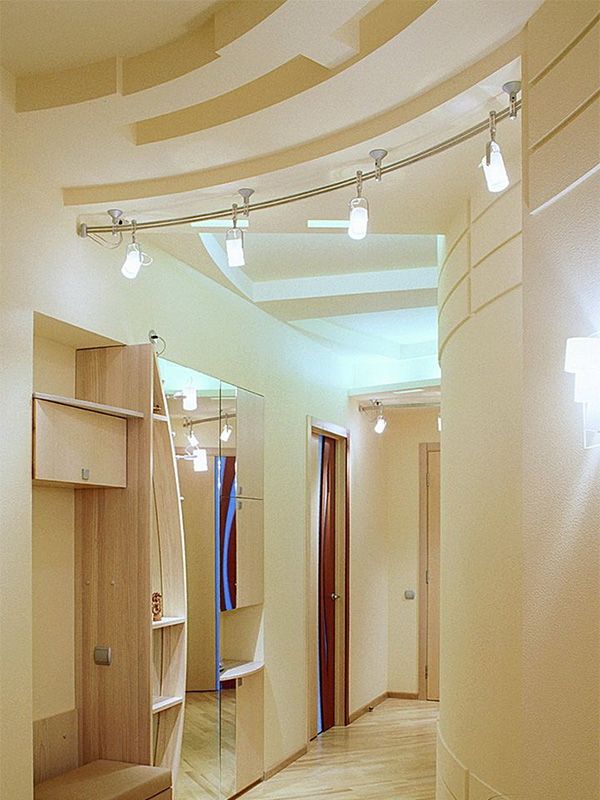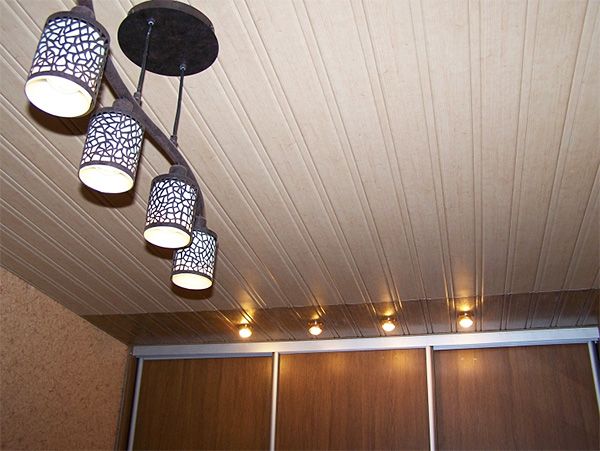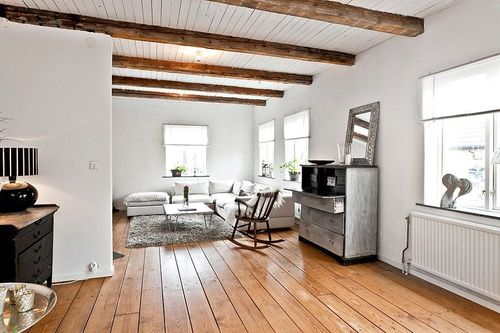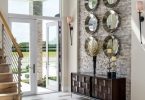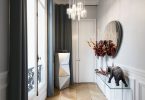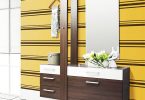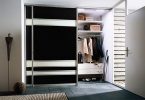Hallway – this room meets and sees us off every day at the exit from the house. There should be a high-quality, stylish and practical finish here, and this applies to all surfaces without exception, including the ceiling.
Content
- Simple options: painting, plastering, pasting
- Dropped ceilings
- Stretch ceiling
Simple options: painting, plastering, pasting
All these types of finishes have one common feature – they require surface preparation, careful leveling. Otherwise, it will be impossible to talk about the quality and style of design..
Stylish ceiling design in the hallway
Whitewash
The most democratic in terms of cost, lightweight and somewhat old-fashioned option. In this case, the ceiling is plastered, leveled, and then whitewashed. It turns out a flat white surface – not a bad option if the budget for repairs is limited, but not suitable for design delights.
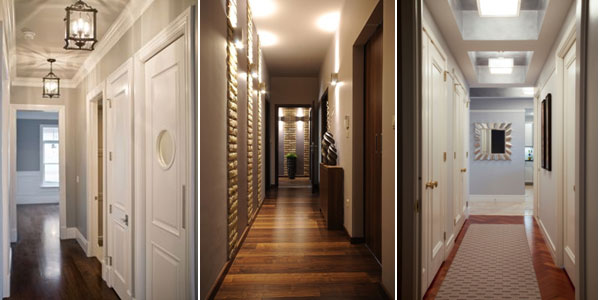
Instead of whitewashing, staining is now used
Coloration
Ceiling painting is another budget method that also requires pre-leveling the surface. But here the number of design options is more extensive, since you can use ordinary paint that forms a smooth surface, or you can give preference to textured paint, thanks to which the ceiling will acquire an expressive texture.
Important. Among the advantages of coloring is a huge selection of pigments and shades. You can choose the material that is ideal for wallpaper, furniture fronts or the surface of interior doors. Even if there is no suitable option among the finished paints, then you can turn to colorists, and with the help of carefully selected pigments, you can get the necessary tone.
Painting is a simple and practical option for finishing the ceiling in the hallway
The paint is applied only to a thoroughly putty ceiling, even, without cracks and protrusions. Even a thick coating layer will not hide obvious defects, but will only aggravate them..
Decorative plaster
An interesting way to decorate the ceiling in the hallway, quite easy to implement. In order to create this textured coating, you will first need to repair and plaster the base, and then apply another plaster layer, which will be molded to provide the required relief. Forming is performed on an uncured solution, using a metal and wood grater, a spatula or a sponge.
Decorative plaster on the ceiling in the hallway
Decorative plaster can be done as standard, without pigment. Then the surface is painted in the desired tone after receiving the relief. But you can use the immediately colored mixture – then the pigment is added even at the stage of the solution formation.
Wall and ceiling decoration in the hallway with decorative plaster
An interesting effect can be obtained using two compositions with pigments of different tones – one is performed in the background, and the second, on which there will be protrusions, is brighter.
Wallpaper
Wallpapering also belongs to the standard methods of decorating ceiling surfaces. Among the advantages of such coatings are the ease of adhesion and variable design. It will not be difficult to find a suitable decor in modern collections – textured, monochrome or patterned. Often, coverings from the same series are chosen for the ceiling as for the walls..
Pasting the ceiling in the hallway with wallpaper
But do not rely on the durability of such a decor – it is difficult to wash the wallpaper on the ceiling, so they quickly deteriorate.
PVC tiles
These are small PVC modules that are glued to a pre-plastered ceiling. This finish is considered economical and practical. Among the advantages of this material are the budget and ease of installation, but there are also disadvantages. So, this material can hardly be called refined and graceful. So if a consistent style is important to you, you should give preference to a different type of coverage..
Pasting the ceiling with PVC tiles
Dropped ceilings
Suspended ceilings are a kind of classic in living spaces. They are mounted very often, even though such a design «eats» up to 15 cm in height. But it is worth using several levels and choosing the right shape, as the room is transformed, it becomes larger and higher.
Multilevel false ceiling with built-in lights
Plasterboard ceilings
Most often, suspended ceilings involve the use of plasterboard. It is mounted on a pre-made frame made of rails.
Important. Even at the stage of creating the frame, it is planned to lay out electrical wires for spot lighting. After that, plasterboard sheets are mounted, lamps are installed, then the seams between the sheets are glued, and the entire surface is putty. We will consider hallway lighting options in a separate article..
Multilevel plasterboard ceiling
Among the advantages of drywall:
- strength;
- moisture resistance;
- ecological cleanliness;
- fire-fighting properties;
- light weight, which makes installation quite easy and quick;
- the material is quite flexible, which means it can take any shape.
This form of plasterboard ceiling construction is called «river»
In addition, drywall does not require thorough preparation of the base, its leveling, and so on. Behind the sheets attached to the frame, you can hide ventilation systems, electrical cables, and so on. You can even carry out local repairs if necessary, replacing the damaged section of the structure.
Sophisticated plasterboard construction with swivel spots on the boom
The created plasterboard ceiling can be pasted over, painted, illuminated with LED strips. Two- or three-level structures are ideal for zoning, but it is advisable to use them only in large square hallways or in rooms of irregular shape.
Using plastic modules
False ceilings also include plastic structures. Some do not like this finish because of their too «office» appearance, and some choose it for its practicality and affordability. Plastic is economical and easy to clean – all dirt from its surface can be washed off with a regular sponge and detergent or even a mop.
Ceiling made of plastic panels
It is interesting that today manufacturers are striving to produce a variety of designs of plastic panels – among them both classic white, cream and delicate watercolor shades with light overflows, similar to marble, and bold modern solutions – for example, mirror, glossy, exactly imitating crumpled fabric, leather, metal or natural stone.
Rack ceiling
This type of construction is not often found in residential apartments, but it is very popular in private houses. We are talking about rather thin aluminum strips with sputtering. They are assembled in much the same way as plastic structures, but differ in a more expressive design – these are chrome, gold-plated or bronze surfaces. Naturally, they are not suitable for all styles – for example, in aristocratic classicism or romantic provence they will be inappropriate.
Aluminum slatted ceiling
Wood
Natural wood is also not a frequent guest in the decoration of our houses, especially when it comes to the ceiling in the hallway. However, green trends dictate their direction – for styles with the prefix «eco» no better solution.
Natural wood ceiling
It should be borne in mind that wood always does not tolerate high humidity. Therefore, the surfaces are necessarily treated with special impregnations, and they will need to be periodically restored..

